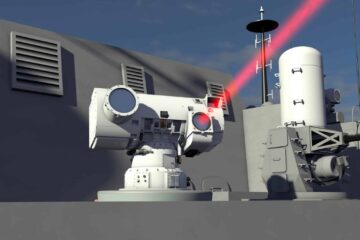The Royal Navy « has an enduring requirement for an increased presence within the underwater battlespace and is looking to address the lack of current options in order to increase the number of delivery ready platforms », the UK MoD stated.
Carried out through the Defence and Security Accelerator (DASA) program, this multi-year competition is to be divided in two stages, a research, design and re-fit stage and a testing and trialling stage. In the latter stage it is expected that the system will be tested in representative environments for extended periods; the sea trials in 2nd stage may be up to 2 years long.
Selected bidders will aim to autonomously pilot an existing commercially-available underwater vehicle capable of more than 3000 miles and at least 3 months deployment by the end of Stage 1. The proposed XLUUVs will be able to carry, deliver and recover test payloads of more than 2m3 and 2 metric tonnes, the UK MoD added. Potential payloads mentioned in the DSTL document include EO, EW, communications electronic support measures, and acoustic/non-acoustic surveillance systems.
Once equipped with the autonomous control system, the XLUUV should be capable of providing flexible, accurate and timely covert intelligence as well as an anti-submarine warfare (ASW) barrier capability. In this specific scenario, the XLUUV is tasked with enacting an anti-submarine barrier in a particular location. The XLUUV leaves its dock in the harbour and autonomously, and covertly, transits underwater to the checkpoint. Upon reaching the checkpoint, the underwater vehicle proceeds to patrol a pre-determined area for up to three months. During this period it encounters a target of interest, and identifies it as hostile. Upon identification, it covertly reports the incident to control, before returning to station and continuing the patrol.
Moreover, the proposed systems will have a low radiated acoustic signature and an open architecture to permit integration of 3rd party systems (developer-agnostic) for operation of the vehicle and its payloads.
The total funding available for this competition is £1m (USD1.3 million) for Stage 1 (research and development of an autonomous control system and re-fit of an existing manned submersible to implement this innovative autonomy); and a further £1.5m (USD1.95 million) for Stage 2 (rent and testing of the novel autonomous functions of the submersible at a manufacturer-proposed operating base for up to 2 years).
With this in mind, it is hard to not think about Boeing’s Orca XLUUV concept, for which the US company landed a US$43 million US Navy contract for the fabrication, test, and delivery of four platforms.






